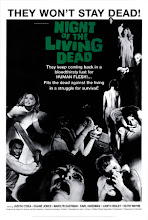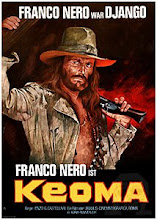 Night Tide
Night Tide Director/Writer Curtis Harrington
Cast Dennis Hopper (Johnny Drake), Linda Lawson (Mora), Gavin Muir (Captain Samuel Murdock), Luana Anders (Ellen Sands), Marjorie Eaton (Madame Romanovitch), "Cameron"/Marjorie Cameron (Water Witch)
 We here at Schlock Treatment and Trash Video aren’t just about screening or renting B films. We have a philosophy, believe it or not, that applies not only for movies, art and culture in general but for life itself. We hold up as essential three things: genuine wit, independent spirit and ingenuity in the face of sometimes mountainous obstacles. In other words, everything foreign to mainstream Hollywood Blanderama.
We here at Schlock Treatment and Trash Video aren’t just about screening or renting B films. We have a philosophy, believe it or not, that applies not only for movies, art and culture in general but for life itself. We hold up as essential three things: genuine wit, independent spirit and ingenuity in the face of sometimes mountainous obstacles. In other words, everything foreign to mainstream Hollywood Blanderama.
 Every now and then you stumble across a filmmaker whose career seems to embody these principles. Such filmmakers are both the director (Curtis Harrington) and actor (Dennis Hopper) of our two films tonight. Our first film is Night Tide filmed in 1960, Hopper’s first lead role in a remarkable horror movie which combines elements of Greek tragedy, the dreamlike atmosphere of Cocteau, creepiness of both Edgar Allen Poe and the classic horrors of Val Lewton. That’s a big reputation to live up to. But to understand and fully decode Night Tide, we must go back almost twenty years before.
Every now and then you stumble across a filmmaker whose career seems to embody these principles. Such filmmakers are both the director (Curtis Harrington) and actor (Dennis Hopper) of our two films tonight. Our first film is Night Tide filmed in 1960, Hopper’s first lead role in a remarkable horror movie which combines elements of Greek tragedy, the dreamlike atmosphere of Cocteau, creepiness of both Edgar Allen Poe and the classic horrors of Val Lewton. That’s a big reputation to live up to. But to understand and fully decode Night Tide, we must go back almost twenty years before.

 Parson’s widow continued her involvement in underground circles, appearing alongside avant-garde artist and filmmaker Curtis Harrington in Kenneth Anger’s experimental film Inauguration Of The Pleasure Dome (1954). Harrington was quite circumspect about his degree of involvement in the non-filmic side of the avant-garde scene right up until his death, but Anger’s immersion into the occult world is captured on film and in print as public record.
Parson’s widow continued her involvement in underground circles, appearing alongside avant-garde artist and filmmaker Curtis Harrington in Kenneth Anger’s experimental film Inauguration Of The Pleasure Dome (1954). Harrington was quite circumspect about his degree of involvement in the non-filmic side of the avant-garde scene right up until his death, but Anger’s immersion into the occult world is captured on film and in print as public record.
 Meanwhile Dennis Hopper in the late Fifties had a string of supporting roles as villains and weaklings, notably in two films starring his compatriot James Dean. Hopper was also an aspiring artist and photographer, and would congregate with like-minded artists, including Marjorie Cameron, in the So-Cal bohemia of LA’s Santa Monica beachdom. By this time Marjorie Cameron, or simply “Cameron”, was a renowned painter of intensely occult themes whose work were hardly ever exhibited or sold; she believed professional artists were akin to cheap prostitutes. Re-enter Curtis Harrington, after spending much of the Fifties in London and Paris working on unsuccessful film projects and writing articles for Cahiers du Cinema, with his script for Night Tide, the story of a sailor who falls in love with a girl in a mermaid exhibit who may or may not be descended from Sirens and thus lures men to their watery graves. This became Hopper’s first role as leading man, and Harrington’s first indie feature.
Meanwhile Dennis Hopper in the late Fifties had a string of supporting roles as villains and weaklings, notably in two films starring his compatriot James Dean. Hopper was also an aspiring artist and photographer, and would congregate with like-minded artists, including Marjorie Cameron, in the So-Cal bohemia of LA’s Santa Monica beachdom. By this time Marjorie Cameron, or simply “Cameron”, was a renowned painter of intensely occult themes whose work were hardly ever exhibited or sold; she believed professional artists were akin to cheap prostitutes. Re-enter Curtis Harrington, after spending much of the Fifties in London and Paris working on unsuccessful film projects and writing articles for Cahiers du Cinema, with his script for Night Tide, the story of a sailor who falls in love with a girl in a mermaid exhibit who may or may not be descended from Sirens and thus lures men to their watery graves. This became Hopper’s first role as leading man, and Harrington’s first indie feature.
 From the moment Hopper’s relatively innocent sailor – the film’s “outsider” – mounts the stairs of the Blue Grotto he literally descends into an otherworld of artists, painters and mysterious “others”, including Mona, a girl who works as a mermaid in Santa Monica’s pier-side freakshow. “I collect things from the ocean,” her Mermaid Show operator and fatherly protector Samuel Murdoch tells a lovesick Hopper, and relates the tale of how he found the infant Mona on a Greek Island during his sea voyages. The locals warn him of the fates of her last two boyfriends, drowned and washed up on the beach, and Mona herself believes her accursed lineage is responsible. The sudden appearance of Cameron as a tall presence mouthing a strange language to Mona, a tarot reader pulling the Hanged Man card (the most telling card in the pack, that of spiritual transformation) and the Carnival itself, all suggest the possibility of another world just behind the veil. Life is but a dream, it says, as the film follows Hopper’s spiritual journey from rational to irrational, from the illusionary world of Maya into the Abyss.
From the moment Hopper’s relatively innocent sailor – the film’s “outsider” – mounts the stairs of the Blue Grotto he literally descends into an otherworld of artists, painters and mysterious “others”, including Mona, a girl who works as a mermaid in Santa Monica’s pier-side freakshow. “I collect things from the ocean,” her Mermaid Show operator and fatherly protector Samuel Murdoch tells a lovesick Hopper, and relates the tale of how he found the infant Mona on a Greek Island during his sea voyages. The locals warn him of the fates of her last two boyfriends, drowned and washed up on the beach, and Mona herself believes her accursed lineage is responsible. The sudden appearance of Cameron as a tall presence mouthing a strange language to Mona, a tarot reader pulling the Hanged Man card (the most telling card in the pack, that of spiritual transformation) and the Carnival itself, all suggest the possibility of another world just behind the veil. Life is but a dream, it says, as the film follows Hopper’s spiritual journey from rational to irrational, from the illusionary world of Maya into the Abyss.
 Several years in Hollywood as assistant to producer Jerry Wald allowed Harrington to pull in favours – from the jazz-soaked score by David Raksin, composer for great b&w noir thrillers (Laura, Force Of Evil) to Floyd (High Noon) Crosby on Camera. The final tally for Night Tide was $75,000 – itself a remarkable achievement for a cheap exploitation film, let alone what Harrington clearly had in mind. Considering his background in occult and avant-garde circles, there’s little wonder the dialogue borders on poetry, that the story resembles a classical fable, and that Night Tide was hailed in Europe as a minor masterpiece. Rescued from the lab by Roger Corman's distribution company Filmgroup, who added the film to the bottom of an AiP double bill with Corman's film The Raven, it was doomed to the same fate as other films of its kind (Carnival Of Souls, Incubus) – art marketed as exploitation, and failing to find an audience as neither. Tonight we hopefully give the film the respect it deserves: the 1960 Night Tide.
Several years in Hollywood as assistant to producer Jerry Wald allowed Harrington to pull in favours – from the jazz-soaked score by David Raksin, composer for great b&w noir thrillers (Laura, Force Of Evil) to Floyd (High Noon) Crosby on Camera. The final tally for Night Tide was $75,000 – itself a remarkable achievement for a cheap exploitation film, let alone what Harrington clearly had in mind. Considering his background in occult and avant-garde circles, there’s little wonder the dialogue borders on poetry, that the story resembles a classical fable, and that Night Tide was hailed in Europe as a minor masterpiece. Rescued from the lab by Roger Corman's distribution company Filmgroup, who added the film to the bottom of an AiP double bill with Corman's film The Raven, it was doomed to the same fate as other films of its kind (Carnival Of Souls, Incubus) – art marketed as exploitation, and failing to find an audience as neither. Tonight we hopefully give the film the respect it deserves: the 1960 Night Tide.
USA 1966 colour
aka Planet Of Blood, Planet Of Vampires
Director/Writer Curtis Harrington Executive Producer Roger Corman Associate Producer Stephanie Rothman
Cast John Saxon (Allan Brenner), Basil Rathbone (Dr. Farraday), Judi Meredith (Laura James), Dennis Hopper (Paul Grant), Florence Marly (Alien Queen), Forrest J. Ackerman (Farraday's aide)
Next up is a remarkably good - no, make that shockingly good - science fiction horror chiller from Roger Corman's Filmgroup. By the mid Sixties Curtis Harrington was on Roger Corman's payroll and delivered a science fiction film under the name "John Sebastian" using Corman's tried-and-true method of re-editing Eastern European sci fi films with new footage using American actors to pad out several of his cut-rate space operas. Voyage To The Prehistoric Planet (1965) featured vintage horror heavyweight Basil Rathbone alongside Russian actors from the stunning Planeta Burg/"Planet Of Storms" in an uneasy mix of old and new, East and West, classy and criminally cheap.
Harrington's next assignment was to do a similar cut and paste with Mechte Navstrechu/"A Dream Come True", a now long-lost Soviet science fiction film from 1963. This time, however, the European footage is used sparingly, to augment rather than dictate the action. Thus more than 90 percent of Queen Of Blood is from an original Harrington script. Its tale of an alien predator consuming its way through a spaceship's crew had its predecessors - It! The Terror From Beyond Space and Mario Bava's Planet Of The Vampires - as well as successors (the 1979 Alien to name just one, whose idea Harrington claimed right up to his death in 2007 was stolen from him).
In Queen Of Blood Harrington assembles an incredible cast of B identities and slumming A-list actors. Basil Rathbone, in scenes filmed at same time as Voyage To The Prehistoric Planet, plays a head scientist who receives an SOS call from an alien spaceship, presumably crashlanded on Mars. Rathbone sends a ship to escort their extraterrestrial ambassador back to earth, piloted by the excellent John Saxon, and his co-pilot Hopper who, some two years before shooting Easy Rider, is clearly improvising much of his dialogue (seriously, who the hell calls their shipmates "baby"?).






















































































No comments:
Post a Comment